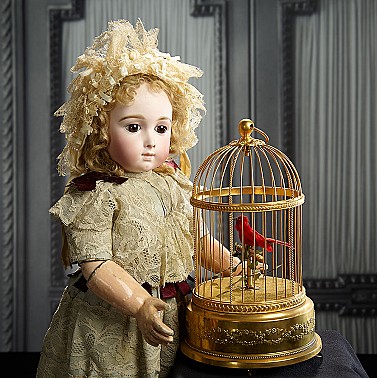THE DOLL COLLECTION OF HUGUETTE CLARK
Saturday, January 11, 2020Lots 1-418
January 11, 2020 in Santa Barbara, California
The collection comprises extraordinary dolls and automata from the French golden age of 1860-1890, as well as selections of sought-after early Japanese cultural dolls and architectural miniatures. The Huguette Clark auction appropriately centers the inauguration of Theriault’s 50th anniversary year. An early and continuing client of Theriault’s for decades, her dolls include many fine antique examples from that 50 year span, as well as privately commissioned Japanese art dolls. Hardbound. 10" x 10". 232 pages.
Live Auction


































































































































































































































































































































































































































